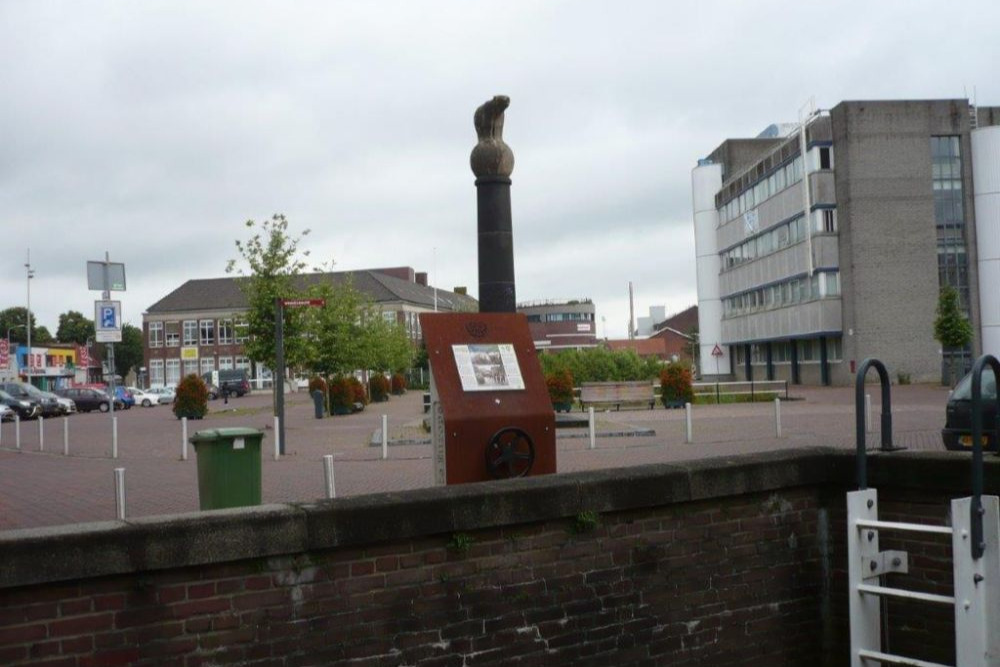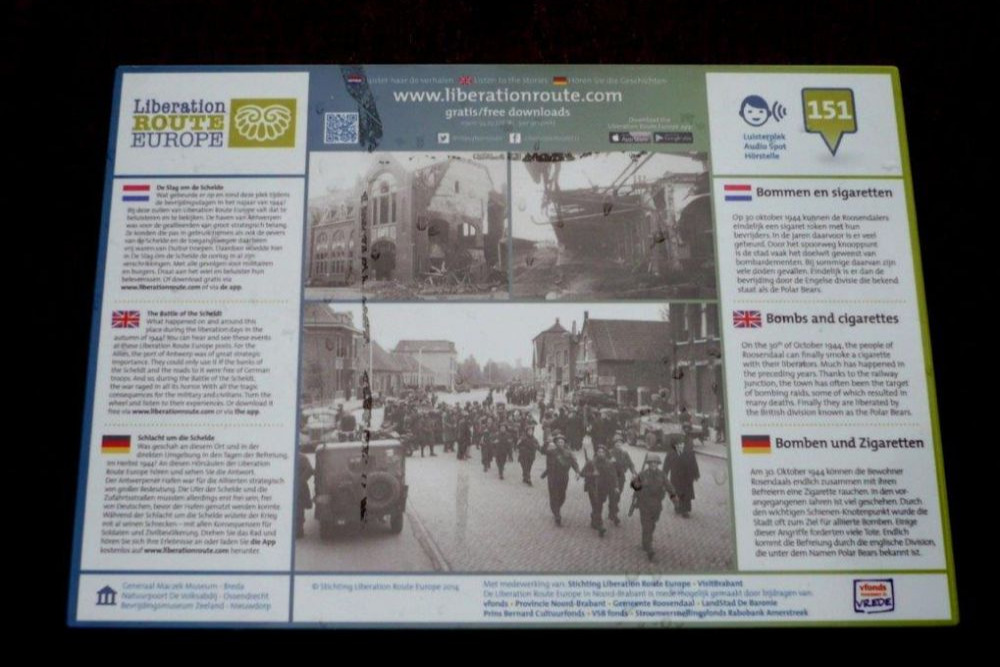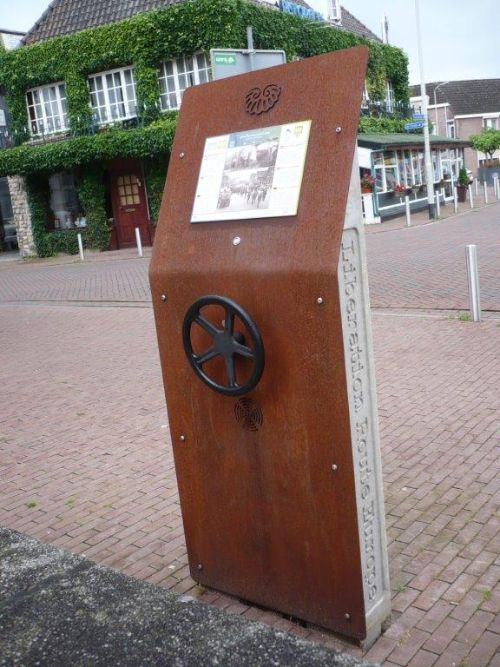Liberation Route Marker 151: Bombs and cigarettes
Bombs and cigarettes
On the 30th of October 1944, the people of Roosendaal can finally smoke a cigarette with their liberators. Much has happened in the preceding years. Thanks to the railway junction, the town has often been the target of bombing raids, some of which resulted in many deaths. Finally they are liberated by the British division known as the Polar Bears.
On the 30th of October 1944, Roosendaal was liberated by the 49th (West Riding) Infantry Division, known as the Polar Bears. In the preceding days, the battle raged around Roosendaal. The British had trouble crossing the tank ditch that virtually surrounded the city. A heavy battle erupted in the Wouw -Roosendaal-Nispen triangle. In the meantime, a German demolition unit blew up culverts and bridges, including those on the Kade.
During the war, Roosendaal had frequently been the target of bombing, because the city was an important railway junction. At the beginning of the war by the Luftwaffe and later by the British and Americans, resulting in many deaths.
Around 10.30 in the morning on the 30th of October 1944, a Bailey bridge was constructed over the Kade and heavy equipment rolled into the city. The people of Roosendaal enthusiastically greeted their liberators.
Audiospot - Bombs and cigarettes
Liberation Route Europe is a certified Cultural Route of the Council of Europe. With hundreds of sites and stories in nine European countries, the route links the main regions along the advance of the Allied Forces in 1943-1945.
The entire route consists of themed routes that can be travelled by by hiking, walking, cycling and car. These routes pass numerous historical and interesting sites and tell stories from a multitude of perspectives that were important in the final phase of World War II.
Many routes feature listening spots, offering the opportunity to listen to a historical story at a location. In addition, many ‘Vectors of Memory’ have been placed, indicating that the passer-by is on one of the Liberation Routes.
The routes can be found on the Liberation Route Europe website or in the app through which many stories can also be listened to.
Do you have more information about this location? Inform us!
Source
- Text: TracesOfWar & Liberation Route Europe
- Photos: Arie van Wijngaarden (1, 2, 3), Ja Taheij (4)
Nearby
Museum
- Historic Collection Dutch Korps Commandotroepen - Roosendaal
- Flying Museum Seppe - Bosschenhoofd (Seppe)
Point of interest
Monument
- Polar Bear Memorial Roosendaal - Roosendaal
- Memorial for Gratitude Roosendaal - Roosendaal
- Resistance Monument Roosendaal - Roosendaal
Cemetery
- Commonwealth War Graves Roman Catholic Cemetery Roosendaal - Roosendaal
- Dutch War Graves Roman Catholic Cemetery Roosendaal - Roosendaal
- Dutch War Graves Municipal Cemetery Roosendaal - Roosendaal
Remembrance Stone
- Stumbling Stones Hulsdonksestraat 27 - Roosendaal
- Stumbling Stones Domineestraat 17 - Roosendaal
- Stumbling Stone Molenstraat 44 - Roosendaal







